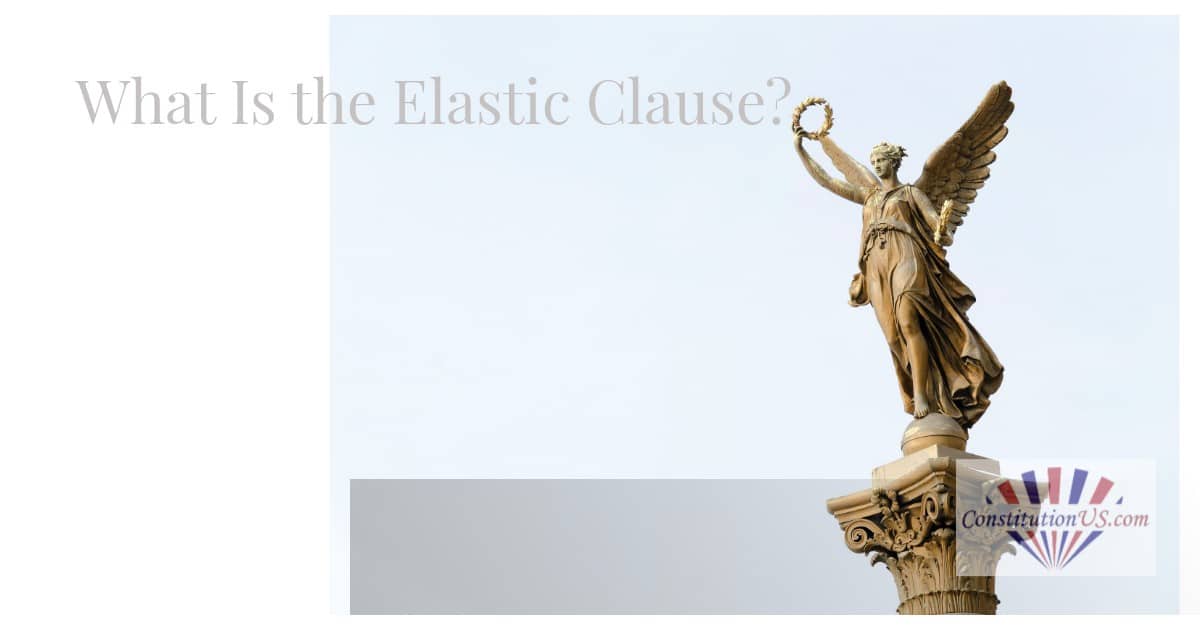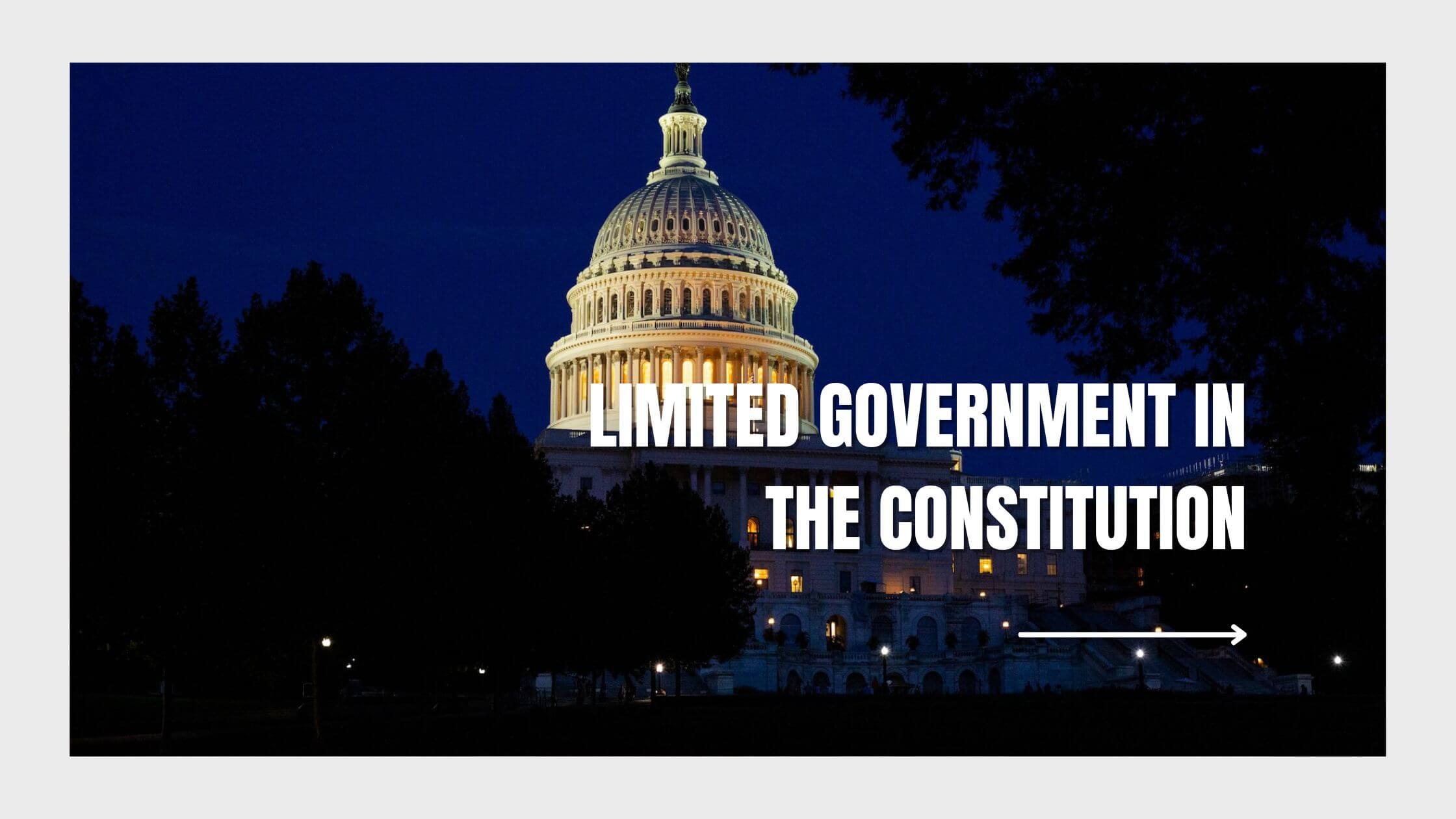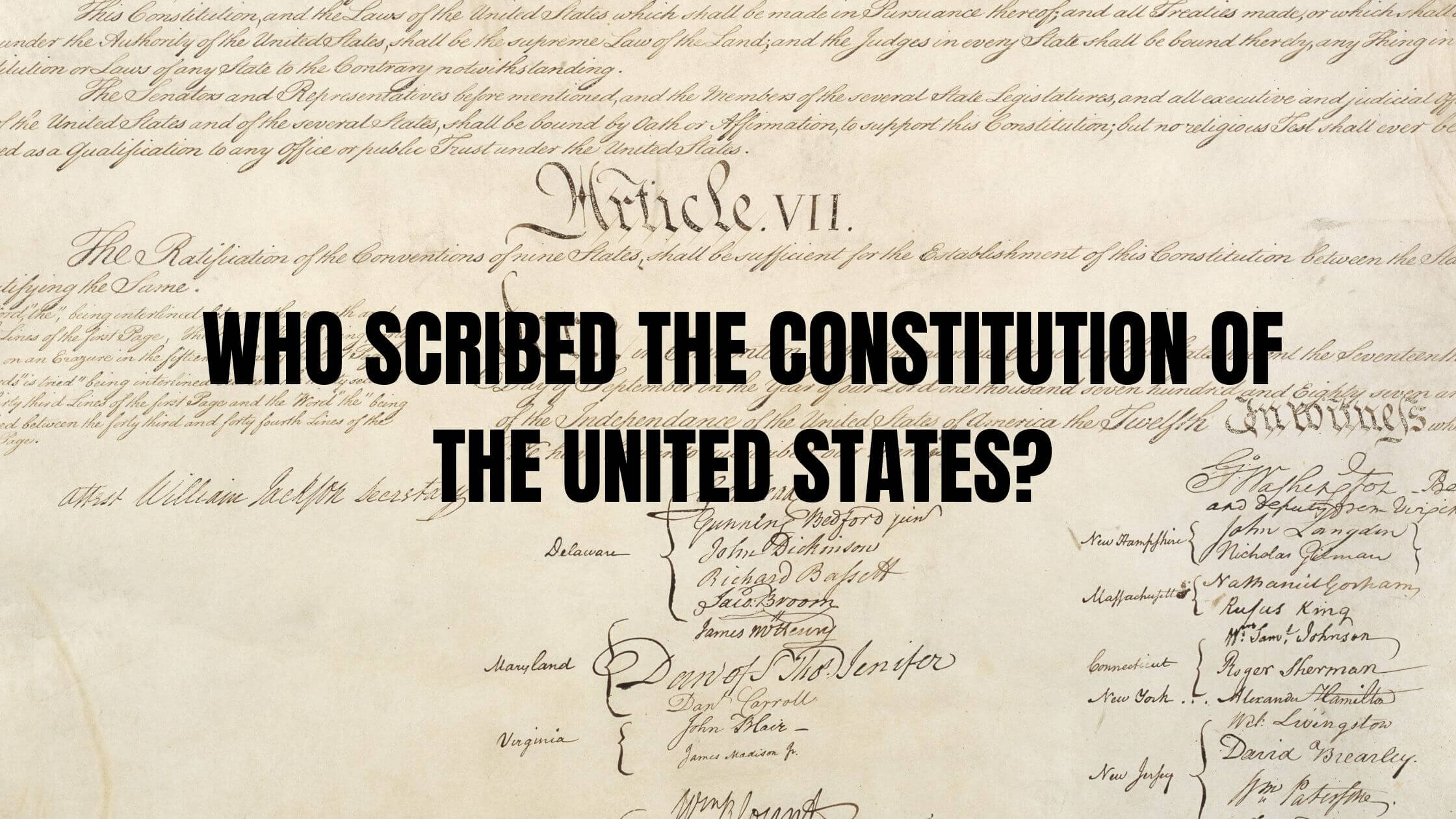Table of Contents
ToggleThe elastic clause is arguably one of the most important and heavily debated parts of the Constitution, especially when it comes to limiting federal power and protecting states’ rights.
It is also one of the most commonly misunderstood clauses, similar to how the Commerce Clause is often debated.
In this article, we are going to take a look at exactly what the elastic clause is, what it means for Congress and federal power, and why it is so important.
The Job of the Constitution
Before you can understand the elastic clause, you have to understand what the United States constitution has set out to do, and that is to define the powers of the federal government and the powers of the state.
The tenth amendment gives state governments power over anything not listed as a federal power. Congress’s authority is limited to enumerated powers. Additionally, the Supremacy Clause says that federal law must be held above state law.
Because the Constitution outlines federal and state law in that way, you have to understand federal law and the powers of Congress before you can really grasp how the United States Government works.
The Powers of Congress
So what are the enumerated powers of Congress?
Well, there is a long list of enumerated powers assigned to Congress in the Constitution. These powers include specific things like providing for a common defense, the ability to coin money, collect taxes, and regulate trade between states. It also gives Congress the power to do some more broad things like maintain general welfare and promote the useful arts.
The only problem with this system is that there are a lot of gaps when it comes to what Congress is allowed to do. For instance, while Congress has been specifically given the power to regulate federal finances, they were not specifically given the power to create a national bank. In another part, Congress is given the power to punish piracy, though the extent of penalty authority is inferred rather than explicit.
This is where the elastic clause (also known as the “necessary and proper clause” and the “sweeping clause”) comes in.
What Does the Elastic Clause Say?
You can find the elastic clause at the end of article 1 in section 8. The clause gives Congress the power
“to make all Laws which shall be necessary and proper for carrying into execution the foregoing powers, and all other powers vested by this constitution in the government of the United States or in any Department or Officer thereof.”
A lot of people do not understand what this clause is actually saying. Many people believe that it gives Congress the right to do pretty much anything they want as long as they think it is “necessary and proper.”
While the clause does give Congress the power to do a lot, it is a little bit more nuanced than most people believe, and the exact powers that the clause gives to Congress are something that has been heavily debated throughout the history of the United States.
The Three Parts
For any law to fall under the elastic clause, three requirements must be met:
1) The law passed has to be necessary.
2) The law passed has to be proper.
3) The law passed has to be used to carry into execution some other federal power.
The only problem is that these terms are fairly broad and not defined in the Constitution. When you take the broad language of the elastic clause and combine it with the broad language of some of the enumerated powers like “general welfare” or “useful arts,” there is a lot of room for debate about what exactly Congress is and isn’t allowed to do.
There is also some debate about whether or not we are supposed to look at each part of the clause individually or as a whole. But, either way, it is important to have an understanding of what these terms mean, at least according to the general consensus right now.
The Law Has to Be Necessary
For most of United States history, the part of the elastic clause that has been most heavily debated is the word “necessary”. People all the way back to early lawmakers have debated what exactly it means for a law to be necessary.
Some people, like Thomas Jefferson, take a more strict interpretation of this word, as seen in debates over states’ rights. He believed that for a law to be necessary, it would have to be so important that without it, Congress would be entirely unable to carry out one of the enumerated powers.
He took a very literal interpretation of necessary; therefore, Congress would have to prove a direct connection from the law they are trying to pass to the powers granted to them in the Constitution.
Other people, such as Alexander Hamilton, have chosen to take a much broader interpretation of necessary. For instance, Hamilton believed that any law that could be considered conducive or helpful could be counted as necessary, which gives Congress the power to do a lot more.
He likely took this perspective because he wanted to establish a national bank, which could not be done through Congress on a more strict interpretation of the word necessary.
The Supreme Court’s Decision
When something in the Constitution is debated, we can usually turn to the Supreme Court as they have been charged with upholding the Constitution. They set the standard for what can and cannot be deemed constitutional. The first time the Supreme Court made a major decision about what “necessary” meant in the elastic clause was in 1819 with the famous McCulloch v. Maryland Case. At the end of the case, the Supreme Court sided with Hamilton’s interpretation and defined “necessary” very broadly, so Congress could establish a national bank.
Since that case, the U.S. government supports a broad definition of ‘necessary.’ In fact, the Supreme Court has never found a congressional law unconstitutional on the grounds that it was unnecessary. Nevertheless, there are still plenty of people in the United States that believe that Congress should have to hold a strict interpretation of this clause and that if they do not, they are overstepping.
The Law Has to Be Proper
For most of United States history, the word proper has not been given very much attention. Many of the early political figures found the word to be rather unimportant and held the belief that it did not add anything to the word necessary, and therefore it was rarely brought up in major constitutional debates. If it was, it was usually paired with necessary and never warranted much debate on its own. However, this is starting to change.
More recently, the idea that a law is covered under the elastic clause has to be proper has been getting more attention. But what exactly does it mean for a law to be proper?
Well, right now, it seems that it mainly means that it does not infringe on state rights or blur the boundaries between federal and state powers as outlined in the Constitution.
The New Debate
This idea first started appearing in 1997 when many scholars and academics tried to define what it meant for a law to be proper. This discussion spurred a court case, Printz v United States. In this case, state executives were arguing that a federal law requiring states to enforce gun registration requirements was not “proper.”
The officials made this argument based on the idea that the law violated the tenth amendment and did not respect the boundaries between federal and state rights that were drawn up in the Constitution.
The Supreme Court sided with the state officials, and for the first time, there started to be an official, Supreme Court supported definition of what it meant for a law to be proper.
Since then, there have been more cases and debate surrounding whether or not laws passed by Congress were proper.
For instance, in the 2012 case NFIB v Sebelius there was debate whether Obamacare was a “proper” law. However, there was a lot of debate about whether or not a law could be improper if it did not directly infringe on state rights. At the time, the Supreme Court was divided, and it is still heavily debated today. Generally speaking, those who hold a more strict interpretation of necessary also want to hold a strict interpretation of proper.
For Executing Some Other Federal Power.
Similar to the part of the elastic clause outlining that laws had to be proper, for most of history, there has not been much debate surrounding what it means for a law to be “for carrying into execution the foregoing powers.”
It is not because people did not think it had meaning, nor did they think it was unimportant. It just was not debated because, generally speaking, people agreed about what this part of the clause meant.
The common belief was that Congress could use this clause to make other laws that are already based on the enumerated powers more effective. This means that Congress could justify any law that they could justify as helpful in implementing any already existing laws, not just the enumerated powers. Under this definition, Congress was able to pass a much wider range of laws.
An example of the elastic clause being used in this way can be found in the case of Missouri v. Holland, which involved treaty enforcement. By the end of this case in the year 1920, the Supreme Court decided that Congress was in the right when using the elastic clause to implement and extend the terms of a treaty that had already been negotiated and ratified.
The Other Side
However, recently there have been a few justices that have maintained a much stricter interpretation of what this clause means. Let’s look at the treaty example again. The justices that hold a stricter interpretation would believe that the elastic clause would allow Congress to delegate funds, send ambassadors, or provide the supplies necessary to get the treaty negotiated and ratified in the first place, but it does not give Congress the right to make the treaty more effective after it is already ratified.

Get Smarter on US News, History, and the Constitution
Join the thousands of fellow patriots who rely on our 5-minute newsletter to stay informed on the key events and trends that shaped our nation's past and continue to shape its present.
At the moment, it seems that most people still agree with the previous interpretation of the clause, but in the coming years, this could change. Because this debate is relatively new, it will likely be a while before we are able to reach a general consensus or have a standard for what it means for a law to fit this part of the elastic clause.
Why Is The Elastic Clause Important to Congress?
So, why is it so important to understand what the elastic clause means?
Well, the short answer is because it allows the rest of the Constitution to operate smoothly. Or as smoothly as possible in a country with so many different people with so many different beliefs about how government should work.
Obviously, in order to understand how the federal government works, you have to be able to understand what powers it has been given. Additionally, because of the way the Constitution is written, you can only understand the powers of the state if you understand the power of the federal government.
However, it would have been near impossible for the founders of the Constitution to write out every single power that the federal government needed to have. So instead, they enumerated 18 very important powers, some of which are very specific and some of which are very broad. The elastic clause is what gives Congress the ability to carry out the enumerated powers.
It is also important to understand because it is such a controversial and debated clause. Due to the clause’s broad language, individuals interpret ‘necessary,’ ‘proper,’ and ‘execution’ differently. This influences how they vote.











